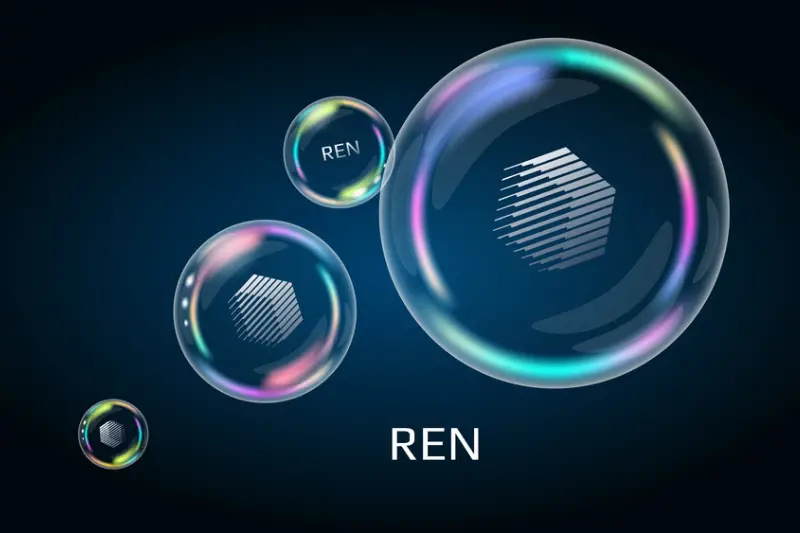Click here to get this post in PDF
Ren Protocol is a decentralized finance (DeFi) platform that aims to provide cross-chain liquidity for a variety of cryptocurrencies. The platform is built on Ethereum, which is a popular blockchain network that allows developers to create decentralized applications (dApps). Industrialization on Oil Demand is one of the biggest challenges in the cryptocurrency world is the lack of interoperability between different blockchain networks. This means that it is difficult for users to transfer assets from one network to another. Ren Protocol seeks to address this issue by allowing users to move their assets across different blockchains seamlessly.
How Ren Protocol Works
Ren Protocol is a cross-chain liquidity protocol that allows for the seamless transfer of cryptocurrencies between different blockchain networks. The protocol is designed to eliminate the need for intermediaries and centralization, providing users with greater security and privacy when transferring assets.
The Ren Protocol uses a technology called Darknodes, which are a network of computers that work together to provide liquidity for different cryptocurrencies. These nodes act as intermediaries between different blockchain networks, allowing for the transfer of assets without the need for a centralized party.
When a user wants to transfer a cryptocurrency from one network to another, they first deposit their assets into the RenVM. The RenVM is a virtual machine that runs on the Ethereum blockchain and acts as an intermediary between different blockchain networks. It allows users to interact with different blockchain networks and transfer assets seamlessly.
Once the assets are deposited into the RenVM, they are converted into a special token called RenBTC, RenETH, or RenZEC, depending on the original asset. These tokens represent the original asset and can be used to transfer the assets between different blockchain networks.
Benefits of Ren Protocol
Ren Protocol offers several benefits to users who want to transfer assets between different blockchain networks. These benefits include:
Decentralization – Decentralization is a key feature of the Ren Protocol, which is a cross-chain liquidity platform that enables users to transfer assets between different blockchain networks. By eliminating the need for centralized parties, the protocol offers users greater security and control over their assets.
Decentralization is achieved through the use of a network of computers called Darknodes, which act as intermediaries between different blockchain networks. These nodes work together to provide liquidity for different cryptocurrencies, without relying on any centralized authority.
Interoperability – Interoperability is a crucial feature of the Ren Protocol, a cross-chain liquidity platform that enables users to transfer assets between different blockchain networks. This functionality is achieved through the use of Darknodes, a network of computers that work together to provide liquidity for different cryptocurrencies.
The Ren Protocol’s ability to transfer assets between different blockchain networks is a significant advancement for the cryptocurrency ecosystem. Traditionally, each blockchain network has operated independently, making it challenging for users to transfer assets between networks. This lack of interoperability has created significant challenges for users, who have had to rely on intermediaries to transfer their assets between different networks.
Security – Ren Protocol places a great emphasis on security to ensure that the assets are transferred between different blockchain networks in a secure and reliable manner. The protocol uses advanced cryptographic techniques to guarantee that the assets are not compromised during the transfer process.
One of the key security features of Ren Protocol is the use of “Darknodes,” which are a network of computers that work together to provide liquidity for different cryptocurrencies. These nodes act as intermediaries between different blockchain networks, allowing users to transfer assets without the need for a centralized party.
Liquidity – Liquidity is a crucial aspect of any financial system, and Ren Protocol plays an important role in providing liquidity for different cryptocurrencies. By allowing users to transfer assets between different blockchain networks, Ren Protocol enables users to access a wider range of trading options and investment opportunities.
The protocol achieves this by using a network of Darknodes that provide liquidity for different cryptocurrencies. These nodes act as intermediaries between different blockchain networks, ensuring that there is always a sufficient supply of assets available to meet the demands of users.
Conclusion
Ren Protocol is a cross-chain liquidity protocol that aims to address the lack of interoperability between different blockchain networks. The platform allows users to transfer assets between different blockchain networks using a network of Darknodes.
Ren Protocol offers several benefits, including decentralization, interoperability, security, and liquidity. These benefits make it an attractive platform for users who want to transfer assets between different blockchain networks.
Overall, Ren Protocol is a promising platform that has the potential to revolutionize the cryptocurrency ecosystem. As more users adopt the platform, it is likely to become a major player in the DeFi space.
Disclaimer: This article is not intended to be a recommendation. The author is not responsible for any resulting actions of the company during your trading/investing experience.
You may also like: How the Merge affected Ethereum’s 2022 results
Image source: Depositphotos.com

